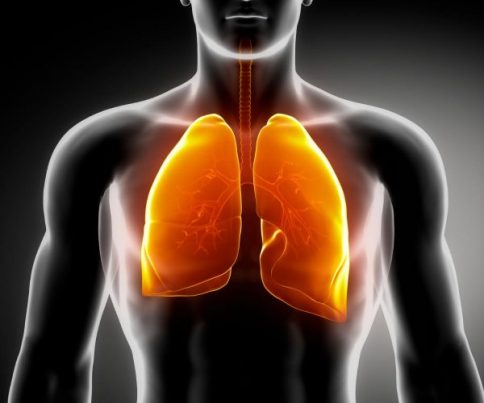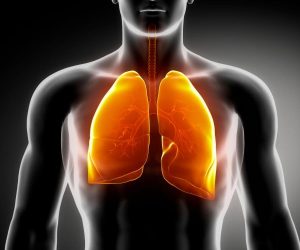
Bronchitis – causes, side effects and treatments at NaturalPedia.com
Saturday, January 27, 2018 by Ralph Flores
http://www.naturalpedia.com/bronchitis-causes-side-effects-and-treatments-at-naturalpedia-com.html

Bronchitis is the condition wherein the air passages in the lungs (also known as bronchial tubes) become inflamed and produce increased amounts of mucus. This often induces coughing (that also brings up mucus), as well as shortness of breath, wheezing, mild fever, and a tightness of chest.
There are two kinds of bronchitis: acute (short-term) and chronic (recurring).
An acute bronchitis is often called as a “chest cold” and is the most common type of bronchitis. This is often caused by the same types of bacteria and virus that are present in colds and flu or by lung irritants such as dust, fumes, vapors, and air pollution. Smoking (including the inhalation of second-hand smoke) can be a cause of acute bronchitis. Bacterial and viral infections can also lead to acute bronchitis.
A more serious condition is chronic bronchitis, which occurs when the bronchial tubes have been inflamed and produce mucus, either for an extended period of time or as a recurring symptom. This is usually found in smokers and, together with emphysema, form chronic obstructive pulmonary disease (COPD). Prolonged exposure to lung irritants in the workplace or air pollution to also lead to chronic bronchitis.

Known risk factors and symptoms of bronchitis
Bronchitis cases happen to a lot of people, but older adults, infants, and young children are more likely to get acute bronchitis compared to other age groups.
Age also plays a role in chronic bronchitis. People over the age of 45 have a higher risk of contracting the condition. Experts have also noted that women are more prone than men to get chronic bronchitis.
Smoking and pre-existing respiratory conditions are also risk factors for bronchitis. Moreover, occupational risks such as contact with dust, chemical fumes, and vapors can also contribute to the condition.
Acute bronchitis usually follows a cold or the flu; however, the main symptom of bronchitis is a persistent cough which usually lasts anywhere from 10 to 20 days. Additionally, other symptoms of acute bronchitis include:
- A green or yellow mucus produced while coughing
- Burning sensation in the chest
- Wheezing (a whistling or squeaky sound when you breathe)
- A sore throat
- Fever and fatigue
Chronic bronchitis — also called “smoker’s cough” — occurs when a cough expels large amounts of mucus. In addition, the person will feel wheezing and a discomfort in the chest. When a person suffers from chronic bronchitis, the condition lasts for at least three months a year for two years.
Body systems affected by bronchitis
Bronchitis mainly affects the respiratory system of a person. In particular, this condition affects the bronchial-lining of the lungs, which become irritated, as well as the mucous membrane. When linings become irritated and produce increased mucus, the bronchial tubes become affected as well, aggravating the condition.
Food items that may relieve and treat bronchitis
Here are some food items that may help treat bronchitis.
- Chili and cayenne peppers help thin out the mucus in the lungs, which makes a cough more productive in expectorating it.
- Mullein tea is a traditional folk remedy for clearing the lungs. It has saponins which help loosen phlegm, making it easier to cough out.
In cases of chronic bronchitis, these food items may help you manage the condition.
- Probiotics help address infections that likely cause bronchitis and reduce cold-like symptoms.
- Fruits and vegetables contain antioxidants which build on your body’s defense against certain types of infections and disease. Adding berries, citrus, and green leafy vegetables in your diet will significantly decrease your chances of getting bronchitis.
- Chicken broth soup helps alleviate bronchitis symptoms, as well as thin out mucus and reduce congestion.
Treating and managing bronchitis
For acute bronchitis, health professionals will normally recommend rest, increased fluid intake, and an antipyretic medication to deal with the fever.
Humidifiers and steam treatments help loosen mucus in the airways and relieve wheezing.
If a person suffers from chronic bronchitis, usually with COPD, medication will be used to address the condition. This includes bronchodilators that will open up the airway and steroids.
However, the best way to treat bronchitis, when it is caused by an irritant, is to remove the source — including occupational risks and smoking.
Where to learn more
- Home Remedies for Bronchitis – Top 10 Useful Tips
- Antibiotics found useless for treating bronchitis
- Simple Natural Remedies can Stop Bronchitis before It Begins
- 9 Ways to remedy bronchitis at home
- Physicians prescribe useless antibiotics to acute bronchitis patients 70 percent of the time
Summary
Bronchitis is the inflammation of the air passages, which result in an increase in mucus production. There are two kinds of bronchitis: acute (which is a common side-effect of colds and flu) and chronic (which primarily affects smokers). Acute bronchitis can be treated with ample rest and fluids, and there are foods that are available to treat the condition.
Sources include
Tagged Under: Tags: Bronchitis





